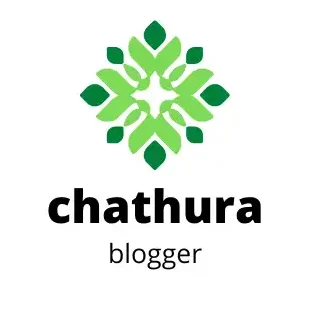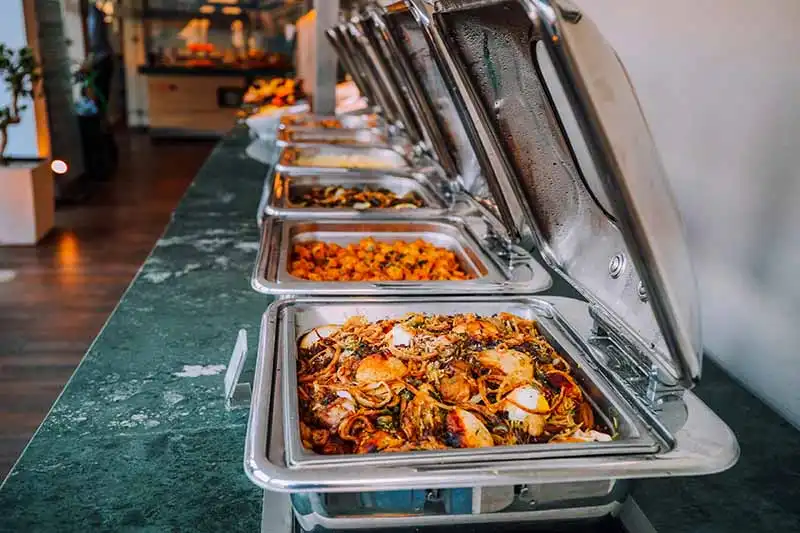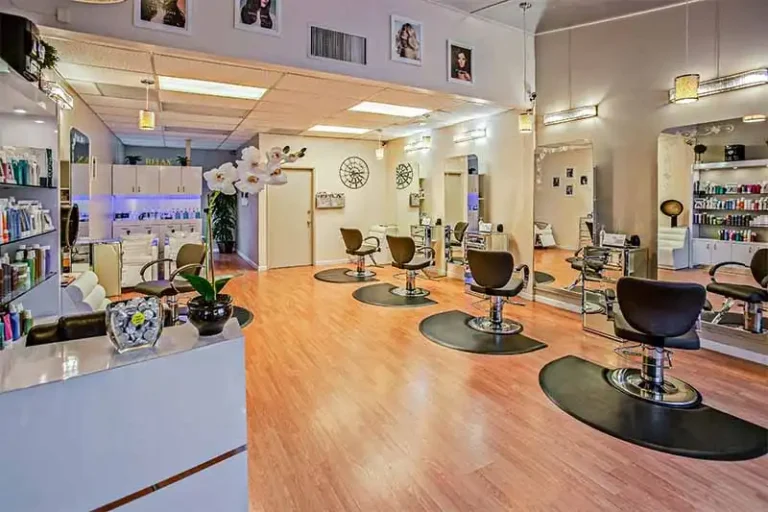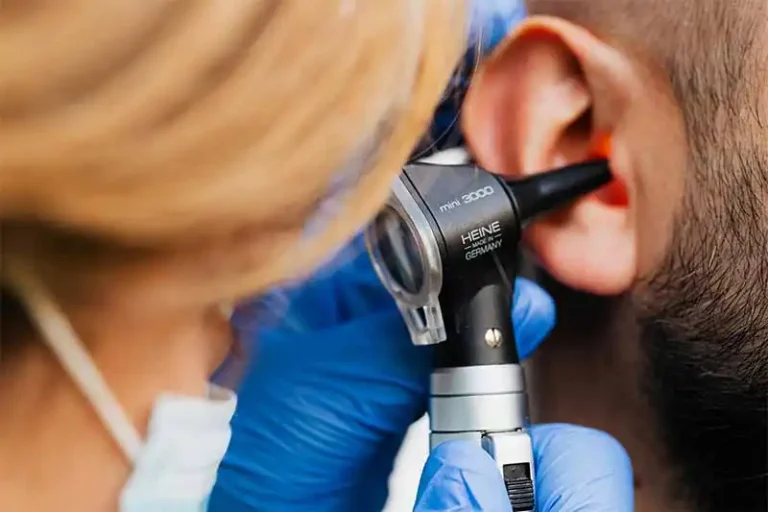Google Ads for Catering Companies: Your Ultimate 2025 Guide
In today’s digital age, running a catering business is not just about preparing delicious meals and delivering exceptional service.
The competition is fierce, and standing out from the crowd requires more than traditional marketing methods.
That’s where Google Ads comes in, offering catering companies a powerful way to reach potential customers at the exact moment they’re searching for catering services.
Think about it—when someone types “wedding catering near me” or “corporate lunch catering,” they’re likely ready to book or at least inquire.
Google Ads allows your business to appear right at the top of search results, ensuring your services get noticed before your competitors.
This means more targeted leads, better conversion rates, and ultimately, higher revenue for your business.
This guide is specifically designed for catering businesses looking to maximize their online advertising efforts.
Whether you’re a small, family-run operation or a large catering company serving multiple cities,
Google Ads can help you connect with the right audience and grow your business in a measurable way.
What You’ll Learn in This Guide
To help you navigate Google Ads effectively, this guide covers everything you need to know to create a successful campaign tailored for catering services.
You’ll discover:
- Why Google Ads is a game-changer for catering companies and how it can give you an edge over organic search results.
- How to set up your Google Ads account step by step, even if you’re new to online advertising.
- The best campaign strategies for catering services, including tips on choosing the right goals, keywords, and targeting settings.
- How to write compelling ad copy that grabs attention and drives inquiries.
- Ways to monitor and optimize your ads to ensure you’re getting the best return on investment.
By the end of this guide, you’ll have all the tools and knowledge you need to create high-performing Google Ads campaigns for your catering business.
Whether you’re targeting wedding clients, corporate events, or special occasions, this guide will show you how to reach the right people and grow your business with confidence.
So, let’s dive in and make your catering services the first choice for customers searching online!
Paid Listings vs. Organic Traffic for Catering Companies
When marketing your catering business online, you’ll often hear about two key ways to attract website visitors: paid listings and organic traffic.
Understanding the differences between these approaches can help you decide the best strategy for your business goals.
What Are Paid Listings and Organic Traffic?
Paid listings refer to advertisements that appear on search engine results pages (SERPs) when someone searches for a relevant keyword, like “wedding catering services near me” or “corporate lunch caterers.”
These ads, such as those run through Google Ads, are placed at the top or bottom of the page with a small “Ad” label, making them highly visible to potential customers.
Organic traffic, on the other hand, comes from users clicking on unpaid, natural search results.
These results are determined by search engine algorithms based on factors like website content, relevance, and authority.
For example, if your catering website ranks high on Google for “best catering in [City],” the traffic it receives from that ranking is considered organic.
Differences Between Paid Listings and Organic Traffic
Paid listings offer immediate visibility. As soon as your campaign is live, your ads can appear in front of people actively searching for your services.
This makes it an excellent choice for catering companies that want quick results or have time-sensitive promotions, like seasonal discounts or holiday bookings.
However, paid advertising involves costs, as you pay per click (PPC) or per impression, depending on your campaign settings.
Organic traffic, while free in terms of clicks, takes time and consistent effort to achieve.
It relies heavily on search engine optimization (SEO), which involves creating high-quality content, optimizing your website, and building backlinks.
Although organic traffic is cost-effective in the long term, it’s not as scalable or predictable as paid advertising, especially for businesses that need to fill bookings quickly.
Why Paid Listings Are Crucial for Catering Companies
For catering businesses, paid listings like Google Ads are a game-changer.
The catering industry often relies on seasonal events, last-minute bookings, or special occasions where customers need services immediately.
Organic strategies can take months to produce results, while Google Ads allows you to appear at the top of search results right when potential clients are searching.
Moreover, Google Ads offers precise targeting options.
You can reach people based on their location, demographics, or even specific searches, such as “wedding caterers under $5000” or “birthday party catering near me.”
This ensures your marketing budget is spent on the right audience, maximizing your return on investment.
While organic traffic should always be part of your long-term marketing plan, paid listings provide the speed, flexibility, and scalability catering businesses need to stay competitive and fill their calendars with bookings.
With Google Ads, you can take control of your visibility and connect with customers exactly when they need your services most.
Why Should Catering Companies Use Google Ads?
The catering industry is a unique business with both challenges and opportunities.
Unlike some businesses that rely on steady, year-round demand, catering services often face seasonal fluctuations and event-based spikes.
Wedding season, holiday parties, corporate events, and special celebrations can create intense demand for catering services, but these opportunities are highly competitive.
That’s where Google Ads can become a game-changing tool for catering companies.
Understanding the Challenges in the Catering Industry
Catering businesses often deal with unpredictable demand.
While summer weddings or year-end corporate parties might bring in significant business, there are off-seasons where finding clients becomes a challenge.
Additionally, many clients search for catering services only when they need them—meaning businesses must be ready to capture attention quickly when searches spike.
Moreover, the competition is fierce.
Many caterers rely on word-of-mouth referrals or traditional advertising methods, but these strategies may not be enough to stay visible in today’s digital-first world.
Potential clients often turn to Google to find options, making it critical for catering businesses to stand out on search results pages.
Why Google Ads Is the Perfect Fit for Catering Companies
Google Ads offers several benefits that address the specific needs of the catering industry:
Precise Audience Targeting
With Google Ads, you can target potential clients based on their location, search intent, and even specific event needs.
For example, you can reach people searching for “birthday party catering in [City]” or “wedding catering under $5,000.”
This precision ensures your ads reach the right audience at the right time, maximizing your chances of converting clicks into bookings.
Flexibility in Budgeting
One of the great things about Google Ads is its scalability.
Whether you’re a small catering business with a limited marketing budget or a larger operation looking to dominate your market, you can set daily budgets that fit your financial goals.
Plus, you only pay when someone clicks on your ad, ensuring you get value for every dollar spent.
Measurable Results
Unlike traditional advertising methods, Google Ads provides detailed analytics that lets you see exactly how your campaigns are performing.
You can track impressions, clicks, and conversions, helping you refine your strategy and make data-driven decisions.
This is particularly useful in the catering industry, where understanding which ads drive inquiries and bookings can significantly improve your return on investment.
Quick and Immediate Visibility
Organic search results can take months to build, but Google Ads offers instant visibility.
The moment your campaign goes live, your catering business can appear at the top of search results, making it an excellent solution for capturing last-minute bookings or promoting seasonal offers.
Proof of Success
Businesses across various industries have seen impressive results with Google Ads, and catering companies are no exception.
For instance, a small wedding catering business in [Your Area] ran a Google Ads campaign targeting couples searching for budget-friendly catering options.
Within three months, they saw a 50% increase in inquiries and secured several new contracts, proving the effectiveness of targeted advertising.
Google Ads is more than just a marketing tool; it’s an opportunity for catering companies to take control of their visibility and connect with clients when it matters most.
Whether you’re looking to fill your calendar for the wedding season or drive inquiries during the quieter months,
Google Ads provides the precision, flexibility, and measurable impact that catering businesses need to thrive in a competitive market.
Setting Up Your Google Ads Account
Creating a Google Ads account is the first step toward unlocking the power of online advertising for your catering business.
Whether you’re targeting clients for wedding catering, corporate events, or small family gatherings, having a well-structured Google Ads account ensures that your campaigns run smoothly and reach the right audience.
Let’s walk through the setup process step by step.
Step 1: Visit the Google Ads Homepage
Go to Google Ads and click the “Start Now” button. If you already have a Google account, you can sign in using those credentials.
If not, create a new Google account to get started.
Step 2: Choose Your Campaign Objective
Google will guide you through setting up a new campaign. If you’re not ready to create a campaign right away, click “Switch to Expert Mode” at the bottom of the page.
This option gives you full control over your account setup without committing to a campaign yet.
Step 3: Fill Out Your Business Details
Provide basic details about your catering business, including:
- Business Name: Use the exact name your clients would recognize.
- Billing Country and Time Zone: Ensure these match your business operations.
- Preferred Currency: Select the currency you’ll use for billing.
Step 4: Set Up Payment Information
Google Ads requires payment details to fund your campaigns. You can choose between automatic payments (billed after accruing costs) or manual payments (adding funds before launching ads).
Step 5: Explore the Google Ads Dashboard
Once your account is set up, you’ll be directed to the main dashboard.
This is where you’ll create and manage campaigns, track performance metrics, and refine targeting options.
Familiarize yourself with key sections like Campaigns, Ad Groups, and Keywords.
Step 6: Link Google Analytics to Your Account
To gain deeper insights into how users interact with your website after clicking on your ads, link your Google Analytics account to Google Ads.
Here’s how:
- Navigate to Tools & Settings in the upper-right corner of the dashboard.
- Under Setup, select Linked Accounts.
- Choose Google Analytics and follow the prompts to link the accounts.
Pro Tip: Linking Google Analytics allows you to track conversions, understand user behavior, and optimize your campaigns more effectively.
Step 7: Conduct a Basic Account Audit
Before launching your first campaign, double-check that your account settings align with your business goals.
Ensure the time zone is accurate, payment methods are correct, and any linked accounts (like Google Analytics or a Google Business Profile) are working properly.
A properly set up Google Ads account is the foundation for successful advertising campaigns.
It not only ensures smooth operations but also helps you maximize your return on investment by providing accurate data for analysis.
Taking the time to set things up right can save you time and money in the long run.
By following these steps, you’ll be ready to create tailored campaigns that help your catering business stand out, attract more leads, and grow your client base.
Planning Your Campaign for Catering Services
When it comes to Google Ads for catering companies, thoughtful campaign planning is key to reaching the right audience and achieving measurable results.
Let’s break down the essential steps to crafting a high-performing campaign tailored to your catering business needs.
Choose the Right Campaign Goal and Type
Your campaign’s goal should align with your business objectives.
For catering companies, common goals include:
- Lead Generation: Attract inquiries for events like weddings, corporate meetings, or private parties.
- Bookings: Drive direct event bookings through your website or phone number.
- Brand Awareness: Build recognition within your service area, especially if you’re new to the market.
After choosing your goal, select the campaign type:
- Search Ads: Perfect for catering companies targeting high-intent users who are actively searching for terms like “wedding caterers near me” or “corporate catering services.”
- Display Ads: Ideal for creating brand awareness by showcasing visually appealing ads to users who may not be searching but fit your target audience (e.g., event planners or corporate executives).
For most catering businesses, starting with Search Ads is a solid choice due to their high intent and direct connection to user searches.
Naming Your Campaign and Setting the Network
A clear naming convention for your campaigns helps you stay organized. Include details like the campaign goal and target area.
For example, “Wedding Catering Leads – Houston.”
When setting the network:
- Search Network: Focuses on showing your ads on Google search results. This is best for catering businesses targeting people actively looking for services.
- Display Network: Displays your ads across websites and apps. Use this if you want to build awareness or retarget website visitors.
For catering companies, it’s usually more effective to stick with the Search Network, as it connects directly with users who have immediate intent.
Targeting Locations and Audience
Location targeting is crucial for catering businesses. Focus on regions where you can realistically provide services, such as cities or neighborhoods within your service radius.
Advanced audience targeting options allow you to refine your reach:
- Household Income: Target higher-income groups for luxury catering services.
- Parental Status: Ideal if you offer family-focused catering packages.
- Event Planners: Reach people organizing events through Google’s affinity audience targeting.
Precise targeting ensures your budget is spent on potential clients who are most likely to convert.
Setting Up Language, Budget, and Bidding
Language Settings:
Choose the language your target audience speaks. For example, set English if most of your audience communicates in it.
Budget:
Start with a realistic daily budget based on your campaign goal and expected conversion rates.
For instance, if leads cost $10 on average, a $50 daily budget might generate five leads.
Bidding Strategies:
- Cost-Per-Click (CPC): Focus on controlling how much you spend per click, ideal for new advertisers.
- Maximize Conversions: Let Google optimize for the highest number of leads within your budget, great for businesses with conversion data.
Starting with manual CPC helps you understand the cost dynamics, but as your campaign gathers data, switching to automated bidding like Maximize Conversions can improve efficiency.
Using Ad Extensions to Boost CTR
Ad extensions provide additional information about your services, improving visibility and encouraging users to click.
For catering companies, some effective extensions include:
- Call Extensions: Add your phone number, making it easy for clients to contact you for inquiries.
- Site Links: Direct users to specific pages like “Wedding Packages” or “Corporate Menus.”
- Structured Snippets: Highlight unique offerings like “Buffet Services,” “Custom Menus,” or “Outdoor Catering.”
Example: A call extension might display “Call us today for wedding bookings” alongside your ad, encouraging immediate action.
Planning your campaign thoughtfully ensures you reach the right audience while staying within budget.
With precise goals, smart targeting, and effective ad extensions, your catering business will be ready to attract high-quality leads and grow revenue.
Building Ad Groups for Catering Campaigns
Ad groups are the foundation of a successful Google Ads campaign, allowing you to organize your keywords and ads around specific services.
For catering companies, structuring ad groups strategically ensures relevance, better quality scores, and improved campaign performance.
Let’s explore how to create ad groups tailored to your catering services.
Structuring Ad Groups for Specific Catering Services
Breaking down your ad groups by specific catering services makes your campaign more targeted and effective.
Each ad group should focus on one type of service to ensure that your keywords, ads, and landing pages align seamlessly.
For example:
- Create an ad group for Wedding Catering to target users searching for terms like “wedding catering near me” or “best wedding caterers.”
- Another ad group could focus on Corporate Event Catering, targeting keywords like “office catering services” or “corporate lunch catering.”
- For Private Parties, use keywords like “birthday party catering” or “small event caterers.”
This structured approach not only improves ad relevance but also boosts your quality scores, reducing costs per click and increasing the likelihood of conversions.
Match Types: Broad, Phrase, Exact
Understanding keyword match types is crucial for controlling which searches trigger your ads:
- Broad Match: Shows your ad for any search that relates to your keyword. For example, the keyword “catering services” might show ads for “event planners” or “food services.” While this offers wide reach, it may attract irrelevant clicks.
- Phrase Match: Ensures your ads only appear for searches that include your keyword in the exact order you specify, such as “wedding catering services.” This is ideal for targeting intent without being overly restrictive.
- Exact Match: Triggers your ads only for searches that exactly match your keyword, such as “corporate catering.” This offers the most control but limits reach.
For catering campaigns, use a mix of phrase and exact match types to balance relevance and reach.
Avoid relying heavily on broad match unless you have a robust negative keyword list.
Conducting Keyword Research
Effective keyword research is the backbone of a high-performing ad group.
Start by identifying terms that potential clients might search for when looking for catering services.
Here’s how:
- Use Google Keyword Planner to find keywords with high search volume and low competition. Terms like “affordable wedding catering” or “small event catering” often work well.
- Explore Google Autocomplete suggestions by typing relevant phrases like “catering for…” or “event catering near…” and noting the suggestions.
- Try free keyword research tools to uncover additional terms that might resonate with your audience.
- Focus on high-intent keywords, such as “book catering services” or “party catering near me,” which indicate that the user is ready to take action.
Adding Keywords to Your Ad Group
Once you’ve finalized your keywords, it’s time to add them to your ad group.
Follow these steps:
- Open your Google Ads dashboard and navigate to the campaign you’re working on.
- Select the specific ad group you’re creating (e.g., Wedding Catering).
- Enter your chosen keywords, grouping similar terms to ensure relevancy. For example, in the wedding catering ad group, include keywords like “wedding buffet catering” and “luxury wedding caterers.”
- Assign match types (broad, phrase, or exact) to each keyword based on your targeting strategy.
- Save your changes, and ensure your ads are tailored to the keywords in each group.
By structuring ad groups around specific services, using appropriate match types, and conducting thorough keyword research, your Google Ads campaign will be set up to deliver better results for your catering company.
You’ll reach the right audience, control costs, and drive more qualified leads to your business.
Using Negative Keywords to Avoid Irrelevant Clicks
When running Google Ads for catering companies, it’s essential to ensure your budget is being spent effectively.
That’s where negative keywords come in. These are terms that prevent your ads from showing up for irrelevant searches, helping you avoid wasting money on clicks that won’t convert into customers.
Why Negative Keywords Matter for Catering Campaigns
Not every search related to catering will align with your business goals.
For instance, someone looking for “free catering services” is unlikely to hire a professional catering company.
If your ad shows up for these searches, you could end up paying for clicks that don’t lead to meaningful inquiries or bookings.
Negative keywords allow you to exclude such irrelevant terms, ensuring your ads are shown only to people who are likely to be interested in your services.
By filtering out low-intent or irrelevant traffic, you not only save your budget but also improve your campaign’s overall performance by increasing the click-through rate (CTR) and driving more qualified leads.
Examples of Negative Keywords for Catering Companies
To maximize your Google Ads ROI, include negative keywords tailored to your business.
For example:
- “Free catering”: This term often attracts users looking for complimentary services or giveaways, which may not align with your offerings.
- “Cheap catering”: While affordability might be a selling point, the term “cheap” can attract price-sensitive customers who may not match your target market. Instead, focus on keywords like “affordable quality catering.”
- “DIY catering”: This phrase might be searched by individuals looking to handle catering themselves, which doesn’t align with your professional services.
- “Catering equipment rental”: If you don’t offer equipment rentals, exclude this term to avoid confusion.
Adding such terms as negative keywords ensures your ads focus on attracting users genuinely interested in hiring catering services for events like weddings, corporate meetings, or private parties.
How to Add Negative Keywords in Google Ads
- Identify Irrelevant Search Terms: Review the “Search Terms” report in your Google Ads account. This shows you the actual phrases users are typing to trigger your ads.
- List Out Negative Keywords: Note terms that aren’t relevant, such as “free catering services” or “catering recipes.”
- Add Them to Your Campaign: Navigate to your campaign settings, select the “Negative Keywords” tab, and input these terms. You can apply them at the campaign or ad group level, depending on how specific you want to be.
- Regularly Update Your List: As your campaign runs, continue monitoring for new irrelevant terms and add them to your negative keyword list.
By using negative keywords strategically, you can refine your Google Ads campaigns for your catering company, ensuring every click counts.
This approach saves your budget, attracts high-quality leads, and keeps your campaigns focused on driving real business results.
Writing Effective Ads for Catering Services
Creating ads that resonate with your target audience is critical for a successful Google Ads campaign.
For catering companies, this means crafting compelling headlines, engaging descriptions, and ensuring every element of your ad aligns with your business goals.
Well-written ads not only attract clicks but also drive meaningful leads, such as event planners, corporate clients, and individuals planning special occasions.
Crafting Headlines That Convert
Your headline is the first thing people see, so it needs to grab attention immediately.
Effective headlines for catering services should evoke emotion, create urgency, and showcase your unique value proposition.
For instance, “Book the Best Wedding Catering in [City]!” not only highlights your expertise but also encourages potential clients to take action.
Using specific details like location or event type can make your ad more relevant to the searcher’s intent.
Consider adding emotional triggers, such as “Make Your Special Day Unforgettable with Gourmet Catering!”
This appeals to the customer’s desire for a memorable event, positioning your services as the perfect solution.
Writing Descriptions That Sell
Your ad description is where you expand on your offering and persuade users to click. Focus on your unique selling points—what sets your catering services apart?
Highlight aspects like a diverse menu, customizable options, impeccable presentation, or reliable delivery.
For example:
“Delight your guests with customized catering solutions. Choose from a variety of delicious menu options crafted to perfection. Book today for on-time delivery!”
Make sure to include a clear call-to-action (CTA) that encourages users to act. Phrases like “Call now for a free consultation!” or “Get a quote for your event today!” add a sense of urgency and direct users toward the next step.
Finalizing Your Ad
Before launching your ad, take the time to preview and refine it. Use the ad preview tool in Google Ads to ensure your ad looks professional across all devices, including mobile.
Double-check your grammar, punctuation, and formatting. Ads with typos or awkward phrasing can appear untrustworthy, driving potential customers away.
Finally, test your ad’s effectiveness by experimenting with multiple variations. For example, run one version emphasizing “affordable catering” and another highlighting “premium event catering” to see which resonates more with your audience.
By investing time and thought into crafting compelling headlines and descriptions, and rigorously testing your ads, you can create Google Ads campaigns that not only attract clicks but also drive valuable leads for your catering business.
Monitoring and Optimizing Your Campaign
Once your Google Ads campaign for catering services is up and running, the real work begins.
To ensure that your campaign delivers the best results, ongoing monitoring and optimization are essential.
This process helps you fine-tune your ads, improve performance, and maximize your return on investment.
Tracking Key Metrics
Google Ads provides a wealth of data, but knowing which metrics to focus on can make all the difference.
Here are three critical ones to monitor:
Click-Through Rate (CTR)
CTR measures the percentage of users who click on your ad after seeing it. A high CTR indicates that your ad is engaging and relevant to your audience.
If your CTR is low, consider revising your ad copy or targeting settings to better match user intent.
Conversion Rate
This metric tracks how many people take the desired action after clicking your ad, such as submitting a booking inquiry or calling your catering business.
A low conversion rate might signal issues with your landing page or misaligned targeting.
Quality Score
Google assigns a Quality Score to your ads based on relevance, expected CTR, and landing page experience.
Higher scores lower your costs and improve ad placements, making this a vital metric for cost-effective campaigns.
Tips for Optimization
A/B Test Your Ads
Experiment with different versions of your ads to identify what resonates best with your audience.
For example, you might test two headlines, such as “Top Catering Services for Corporate Events” versus “Affordable Catering for Weddings and Parties.”
Small changes can have a significant impact.
Adjust Your Bids Strategically
If certain keywords are performing well, consider increasing your bids for those terms to capture more traffic.
Conversely, reduce bids on underperforming keywords to manage your budget efficiently.
Refine Your Audience Targeting
Use performance data to refine your audience settings. For example, if you notice more conversions coming from users in a specific city or demographic, adjust your campaign to prioritize those segments.
Optimize Landing Pages
A strong ad is only as good as the landing page it directs users to. Ensure your landing page is fast-loading, mobile-friendly, and includes clear CTAs like “Request a Quote” or “Contact Us Now.”
Regularly Review Search Terms
Monitor the actual search terms triggering your ads. This helps identify irrelevant queries to add as negative keywords, saving your budget for high-intent searches.
Monitoring your campaign isn’t a one-time task—it’s an ongoing process. Use the insights you gather to continuously refine your strategy.
For instance, if “wedding catering near me” consistently drives leads, consider allocating more budget to similar keywords.
By keeping a close eye on metrics, experimenting with improvements, and staying responsive to campaign data, your catering company can unlock the full potential of Google Ads, attracting high-quality leads and driving consistent growth.
FAQs About Google Ads for Catering Companies
What is the best way to target customers for my catering business using Google Ads?
The best way to target customers is by focusing on specific services such as wedding catering, corporate events, or private parties.
Use location targeting to focus on your service area, and employ keywords like “wedding catering near me” or “best corporate catering in [city]” to reach high-intent customers.
How much should I budget for Google Ads for a catering company?
Your budget depends on your location, competition, and goals. Start with a daily budget that aligns with your overall advertising goals—typically, $10-$50 per day works for small businesses.
You can adjust the budget as you gather more data and refine your campaign.
How do I improve my Quality Score for catering ads?
To improve your Quality Score, focus on creating relevant, high-quality ads that align with user search intent.
Ensure your keywords match your ad copy, and direct clicks to a relevant, fast-loading landing page that enhances user experience.
Consistently improve your CTR by testing different headlines and descriptions.
Should I use Google Display Network for my catering business?
Google Display Network is best for building brand awareness or retargeting people who’ve already interacted with your business.
If you’re focused on generating direct leads or bookings, Google Search Ads would be more effective as they target users with high intent who are actively searching for catering services.
How can I track the performance of my Google Ads campaign?
You can track your campaign’s performance using key metrics like Click-Through Rate (CTR), Conversion Rate, and Cost-Per-Conversion.
Linking your Google Ads account with Google Analytics provides deeper insights into user behavior on your landing pages, allowing you to make data-driven decisions.
What are negative keywords, and why should I use them for my catering ads?
Negative keywords prevent your ads from showing up for irrelevant searches.
For example, adding “cheap catering” or “free catering” as negative keywords ensures that your ad doesn’t show to users who aren’t looking for premium catering services.
This helps save your budget for more qualified leads.







